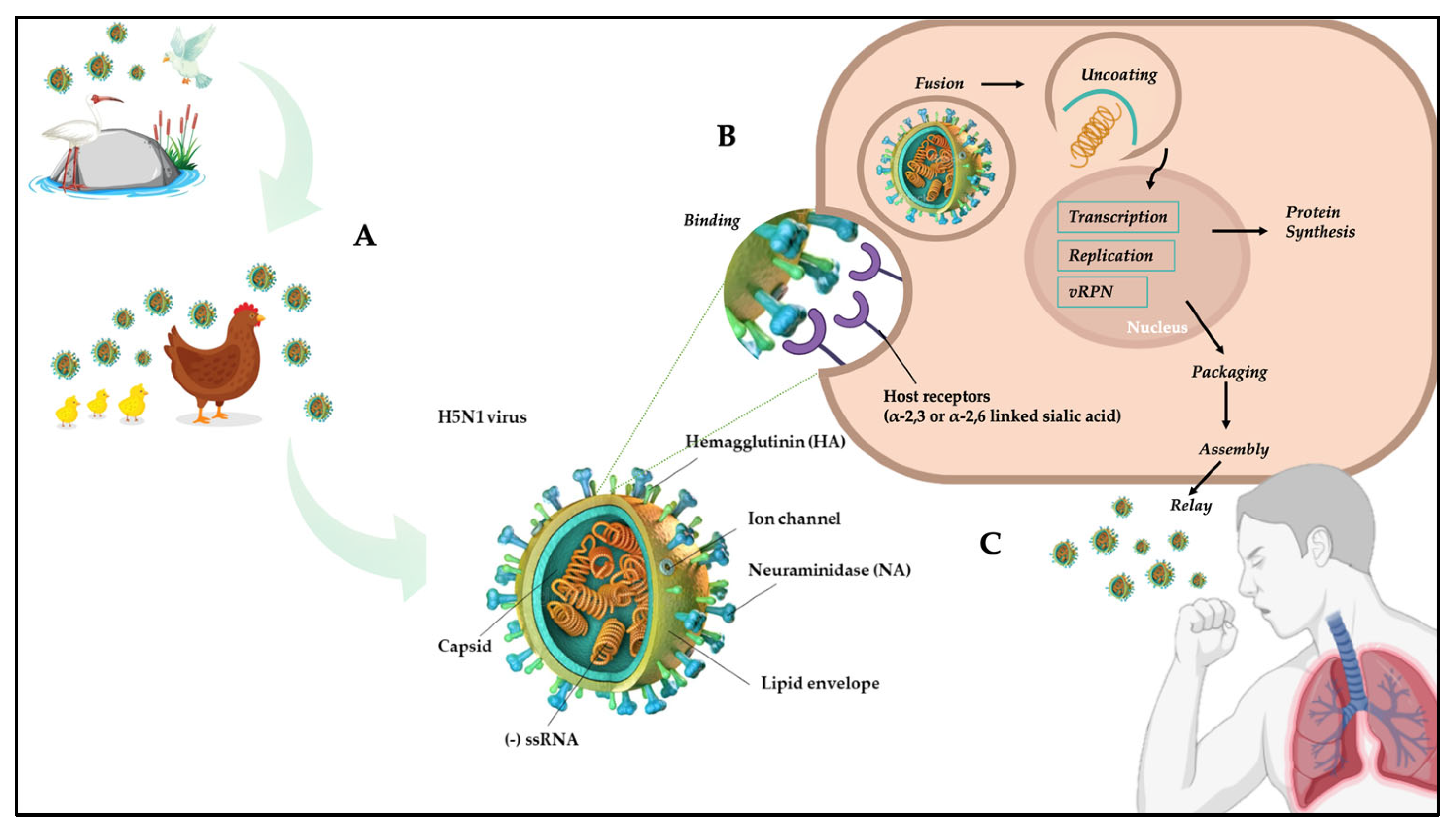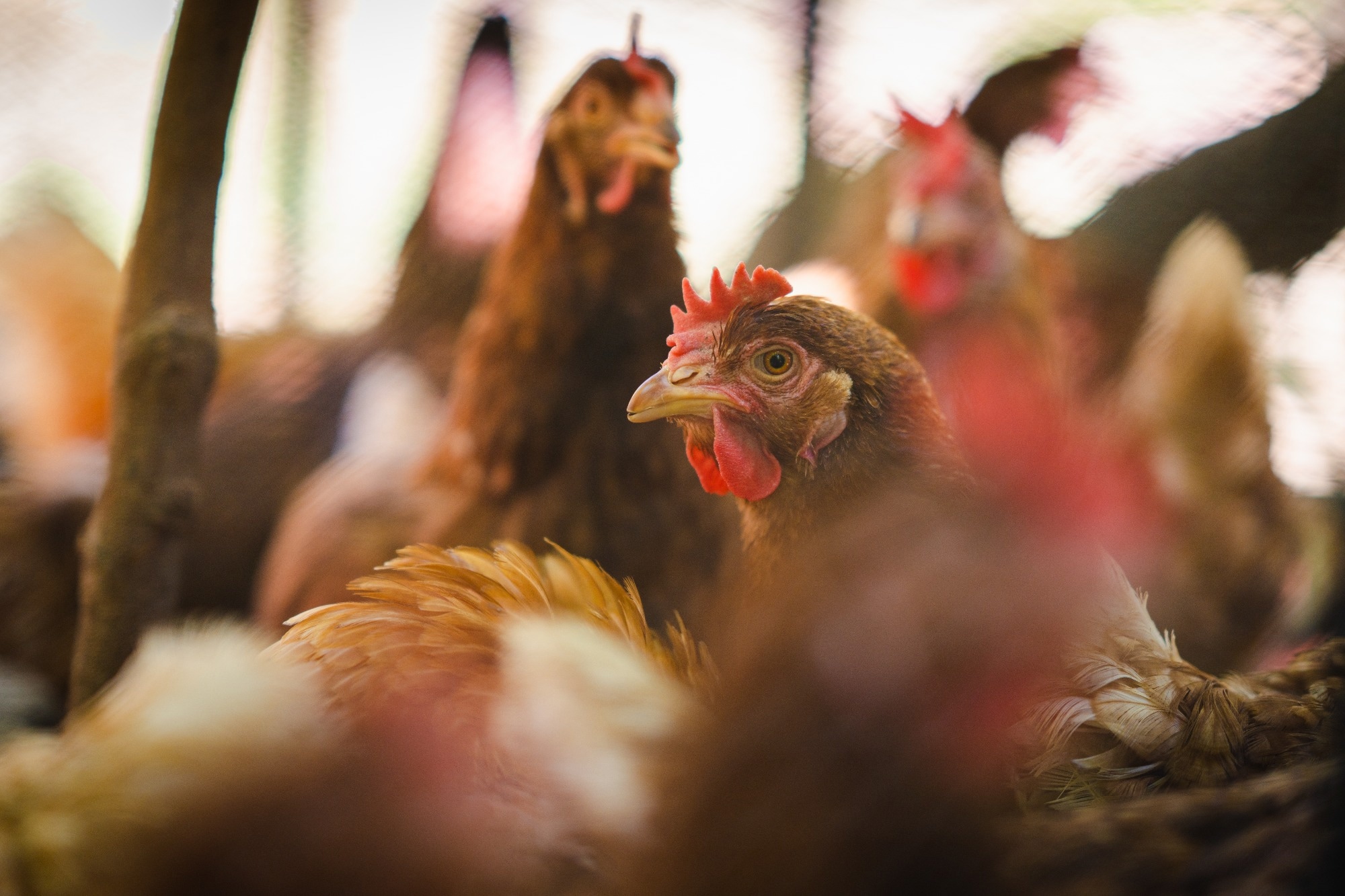Avian Influenza: Understanding The Global Threat And Prevention Strategies
November 21, 2024
Our team has compiled this comprehensive guide to help you understand the global threat posed by avian influenza and the effective prevention strategies that can help mitigate its impact.
Key Differences or Key Takeaways
| Feature | H5N1 | H7N9 |
|---|---|---|
| Virus strain | H5N1 | H7N9 |
| Host species | Poultry, wild birds | Poultry, humans |
| Transmission | Direct contact with infected birds or their secretions | Contact with infected poultry or contaminated environments |
| Symptoms in birds | Respiratory distress, coughing, sneezing, diarrhea | Respiratory distress, fever, muscle aches |
| Symptoms in humans | Fever, cough, sore throat, muscle aches | Pneumonia, respiratory failure, death |
| Treatment | Antiviral medications | Antiviral medications, supportive care |
| Prevention | Vaccination, biosecurity measures, surveillance | Avoidance of contact with infected birds or poultry, vaccination |
- The global threat of avian influenza
- The different types of avian influenza viruses
- The symptoms of avian influenza in birds and humans
- The transmission of avian influenza
- The prevention and control of avian influenza
- The economic impact of avian influenza
- The public health impact of avian influenza
- The future of avian influenza research
FAQ
This FAQ section aims to provide comprehensive answers to common questions and misconceptions surrounding the global threat of avian influenza and the strategies employed to prevent its spread.

Microbiology Research | Free Full-Text | Avian Influenza: Could the - Source www.mdpi.com
Question 1: What is avian influenza and how does it differ from human influenza?
Answer: Avian influenza, commonly known as bird flu, is a viral infection that primarily affects birds. Unlike human influenza viruses, avian influenza strains do not typically transmit to humans through casual contact with birds. However, certain strains, such as H5N1 and H7N9, have the potential to infect humans through prolonged exposure to infected birds or their secretions.
Question 2: What are the symptoms of avian influenza in birds and humans?
Answer: In birds, symptoms of avian influenza can vary widely and may include respiratory distress, decreased appetite, swelling around the head and neck, and sudden death. In humans, symptoms can range from mild flu-like symptoms to severe respiratory illness, including fever, cough, sore throat, and muscle aches. Severe cases may lead to pneumonia, acute respiratory distress syndrome, and even death.
Question 3: How is avian influenza transmitted and what are the risk factors for infection?
Answer: Avian influenza is primarily transmitted through contact with infected birds, their respiratory secretions, or contaminated surfaces. High-risk individuals include poultry workers, veterinarians, and people who handle live birds or visit areas where infected birds are present. Additionally, consumption of raw or undercooked poultry or eggs from infected birds can also pose a risk of transmission.
Question 4: What measures are being taken to prevent the spread of avian influenza?
Answer: Comprehensive strategies are in place to prevent the spread of avian influenza. These measures include surveillance and monitoring of birds, vaccination programs for poultry, biosecurity measures on poultry farms, and culling of infected flocks to prevent further transmission. Additionally, international collaboration and information sharing play a crucial role in tracking the spread of the virus and implementing effective control measures.
Question 5: What can individuals do to protect themselves from avian influenza?
Answer: Practicing good hygiene is essential for preventing avian influenza infection. This includes frequent handwashing, especially after handling birds or poultry products. Avoid contact with sick or dead birds, and report any unusual bird behavior or deaths to local authorities. When traveling to areas where avian influenza is present, follow recommended precautions such as avoiding contact with live birds and poultry markets.
Question 6: Is there a cure or vaccine for avian influenza in humans?
Answer: Currently, there is no specific cure for avian influenza in humans. Treatment focuses on managing symptoms and providing supportive care. Several antiviral medications can be used to alleviate symptoms and reduce the risk of complications. While a vaccine exists for poultry, there is no widely available human vaccine for avian influenza. Research and development of human vaccines are ongoing.
It is crucial to stay informed about the latest developments and follow preventive measures to mitigate the risks associated with avian influenza. By working together, we can effectively prevent its spread and protect both human and animal health.
Tips
Understanding the risks posed by avian influenza requires multifaceted strategies. Implementing these tips can significantly reduce the transmission risk and protect human and animal health:
Tip 1: Enhance Biosafety Measures: Improve poultry farm biosecurity by implementing strict hygiene protocols, limiting visitor access, and using protective gear. This prevents the spread of the virus from infected birds to humans and other animals.
Tip 2: Practice Vaccination: Vaccinate poultry against avian influenza strains prevalent in the region. Vaccination can reduce virus shedding and disease severity, thereby decreasing transmission risks.
Tip 3: Strengthen Monitoring and Surveillance: Establish a robust surveillance system to detect and track avian influenza outbreaks promptly. This enables rapid response, containment measures, and early detection of potential human infections.
Tip 4: Promote Public Awareness: Educate the public about the risks associated with avian influenza, hygiene practices to minimize transmission, and the importance of reporting suspected cases. Raising awareness empowers individuals to protect themselves and their communities.
Tip 5: Foster International Collaboration: Enhance international cooperation to share information on virus strains, surveillance data, and best practices for prevention and control. Collaboration facilitates a coordinated global response to emerging threats.
Tip 6: Invest in Research: Continue funding research to improve understanding of avian influenza transmission, develop more effective vaccines and treatments, and explore novel prevention strategies.
Tip 7: Promote Responsible Wildlife Management: Regulate the trade and movement of wild birds to prevent virus transmission. Monitor and manage poultry-wildlife interfaces to reduce the risk of spillover infections.
Tip 8: Strengthen Animal Health Infrastructure: Invest in veterinary services, diagnostic laboratories, and outbreak response capabilities. Robust animal health infrastructure enables early detection, rapid containment, and effective disease management.
By implementing these tips, we can significantly reduce the global threat posed by avian influenza, protect human and animal health, and prevent the emergence of new pandemic strains. Avian Influenza: Understanding The Global Threat And Prevention Strategies provides a comprehensive overview of the disease, its impact, and the importance of proactive measures to safeguard global health.
Avian Influenza: Understanding The Global Threat And Prevention Strategies
Avian influenza, also known as bird flu, poses a significant global threat to poultry populations and human health. Understanding its implications and implementing effective prevention strategies are crucial to mitigate its impact.
- Transmission: Wild birds, domestic poultry, and humans can transmit the virus.
- Symptoms: Affected poultry may exhibit respiratory distress, coughing, and decreased egg production.
- Economic Impact: Outbreaks can lead to massive poultry culling, disrupting supply chains and causing economic losses.
- Public Health: Some strains of avian influenza can infect humans, causing severe respiratory illness.
- Surveillance: Tracking and monitoring poultry populations is essential for early detection and containment.
- Prevention: Biosecurity measures, such as isolation and vaccination, reduce transmission risks.
Effective prevention strategies involve collaboration between stakeholders, including governments, the poultry industry, and public health organizations. By implementing robust surveillance systems, promoting biosecurity practices, and investing in research and development, we can mitigate the global threat of avian influenza and protect the health of both animals and people.
Avian influenza threat raises discussion of compulsory registration of - Source www.msn.com
Avian Influenza: Understanding The Global Threat And Prevention Strategies
Avian influenza, also known as bird flu, is a highly contagious viral disease that can affect both domestic and wild birds. The virus can also infect humans, and in some cases, it can be fatal. The most common way for humans to become infected with avian influenza is through contact with infected birds or their bodily fluids. The virus can also be spread through the air, through contact with contaminated surfaces, or through the consumption of contaminated food or water.

The battle against avian influenza: genetic analysis unveils the - Source www.news-medical.net
Avian influenza is a serious global threat, as it has the potential to cause widespread economic losses and human health problems. In 2003, an outbreak of avian influenza in Asia led to the death of over 100 million birds and caused economic losses of over US$10 billion. In 2013, an outbreak of avian influenza in China led to the death of over 200 million birds and caused economic losses of over US$20 billion.
There are a number of prevention strategies that can be used to reduce the risk of avian influenza infection. These strategies include:
- Preventing contact with infected birds: This is the most important step in preventing avian influenza infection. Avoid контакт with wild birds, and do not visit farms or other places where birds are kept.
- Practicing good hygiene: Wash your hands thoroughly with soap and water after contact with birds or their bodily fluids. Avoid touching your eyes, nose, and mouth with unwashed hands.
- Cooking poultry and eggs thoroughly: Poultry and eggs should be cooked to an internal temperature of 165 degrees Fahrenheit to kill any viruses that may be present.
- Vaccinating poultry: Vaccinating poultry can help to protect them from infection with avian influenza.
Avian influenza is a serious global threat, but there are a number of prevention strategies that can be used to reduce the risk of infection. By following these strategies, you can help to protect yourself, your family, and your community from this virus.
Table: Key Points about Avian Influenza
| Key Point | Description |
|---|---|
| Avian influenza is a highly contagious viral disease that can affect both domestic and wild birds. | The virus can also infect humans, and in some cases, it can be fatal. |
| The most common way for humans to become infected with avian influenza is through contact with infected birds or their bodily fluids. | The virus can also be spread through the air, through contact with contaminated surfaces, or through the consumption of contaminated food or water. |
| Avian influenza is a serious global threat, as it has the potential to cause widespread economic losses and human health problems. | In 2003, an outbreak of avian influenza in Asia led to the death of over 100 million birds and caused economic losses of over US$10 billion. |
| There are a number of prevention strategies that can be used to reduce the risk of avian influenza infection. | These strategies include preventing contact with infected birds, practicing good hygiene, cooking poultry and eggs thoroughly, and vaccinating poultry. |

0 komentar